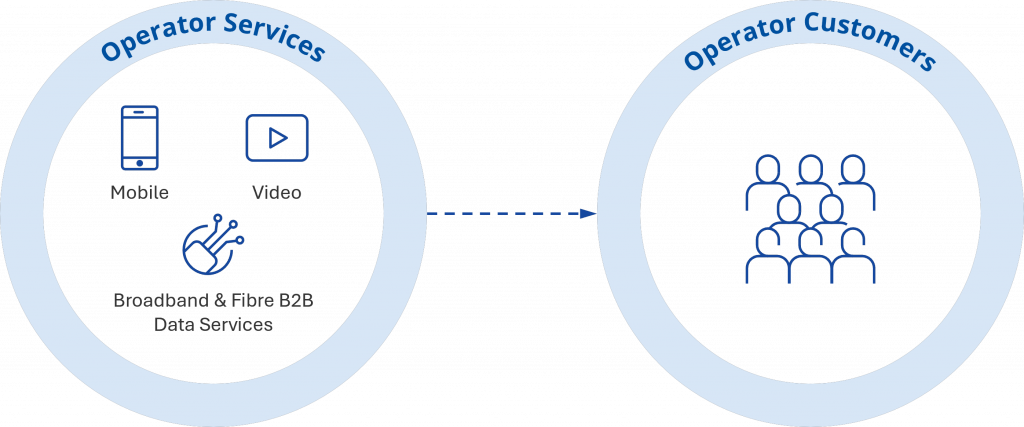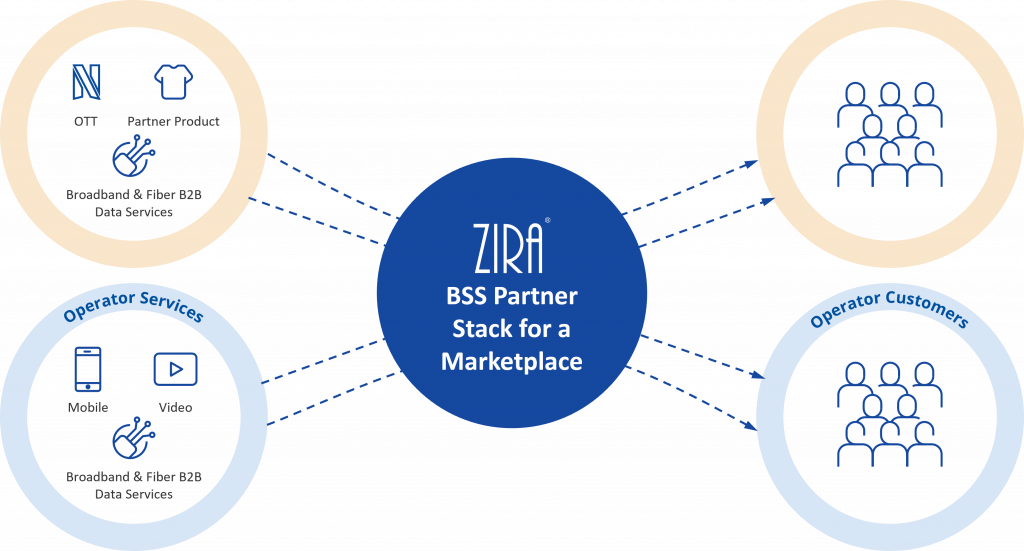
Alen Muslić
Chief Strategy Officer
One of the only constants in the telecoms industry is change and evolution. From new standards and network generations to innovative applications and use cases, adaptation is nothing new for Communications Service Providers (CSPs). However, the next wave of evolution for CSPs will bring about a much more significant shift.
The need to serve new demands and business models is immense, and CSPs know this is something they cannot escape. In fact, in a 2022 survey from STL Partners, 70% of telecoms operators had ambitions to move beyond connectivity and saw their future creating value through platforms and apps.
The question is, what do these business models actually look like, and how can CSPs move toward them?
One model that is worth considering is the Marketplace, which has disrupted industries across the board in recent years, from e-commerce to entertainment. Marketplace models allow businesses to move towards a B2B2X model, expanding the number of revenue opportunities open to them.
In this blog, Alen Muslić, Chief Strategy Officer at ZIRA, delves into Marketplace models and explains why it’s time for CSPs to take advantage.
Marketplaces models: A path to partnerships
From a CSP perspective, a Marketplace model is a partner enablement platform for the sale and purchase of services. It allows CSPs to collaborate with others in the ecosystem and combine their services with supplier partners’ portfolios. This drives opportunities for supplier partners and customer partners alike. Establishing a platform that contains every element of end-to-end partnerships, from agreement to fulfillment to billing, a Marketplace utilizes automation to maximize partnership opportunities.
What does a Marketplace model look like?
To illustrate exactly what we mean when we talk about increasing the number of business opportunities, look at the below illustration. The traditional model we see in Figure 1 has its limitations. There is little room for flexibility. With each service coming directly from the CSP, all innovation and associated risks for developing new services are their responsibility, reducing agility and increasing time to market.

Figure 2, on the other hand, is a different story. The Marketplace model allows for a much wider range of revenue opportunities based on streamlined and automated collaboration.

It works for all types of partners interacting with a CSP.
- The supplier partner – the partner that is providing services to be sold through the Marketplace – has the option to offer a greater number of products to a wider customer base.
- The customer partner – one purchasing through via a Marketplace – can take advantage of new wholesale and B2B2X opportunities. One of the strengths of the Marketplace model is that a Marketplace user can be both a supplier partner and a customer partner at the same time, creating a rich web of opportunities for the CSP offering a Marketplace model.
- The customer partner’s end customer – The ‘X’ in the B2B2X model – has a more streamlined experience with consolidated services.
The Marketplace model nurtures these partnerships and allows CSPs to benefit from several advantages.
Benefits of the Marketplace model
- Cost-efficiency and scalability: CSPs can reduce operational costs by using their existing infrastructure in combination with shared resources through Marketplace partners. They can have the flexibility to scale their services with a reduced time to market as customer demand changes. CSPs already have part of the solution for selling services, and they have a strong billing relationship with the customers – a Marketplace model, which allows them to leverage what they already have to the full.
- Improved user experience: A Marketplace model allows CSPs to manage the buying and selling of services via a portal, and to automate the purchase of services via APIs. By automating relationships through a Marketplace, CSPs can capitalize on a wider range of opportunities without increasing the burden of partnership management. For customer partners and their end users, consolidation of services via a single CSP simplifies and improves the experience of buying services.
- New customer bases: As well as being able to make the most of partner services, a Marketplace model allows CSPs to reach wider customer bases through partnerships. CSPs can access the customers of their partners via B2B2X and wholesale partnerships, exponentially increasing their customer base. This opportunity for expansion is particularly compelling as CSPs look to ensure they continue to achieve revenue growth.
- Stay relevant: We have already seen CSPs acknowledge the need to adapt to stay relevant. By looking towards Marketplace models, CSPs can ensure they remain competitive with an easy way of offering innovative services and solutions through partnering with other industry players. They can offer new products via partners and launch them fast without the need to invest in proprietary infrastructure. A Marketplace offers a quicker and more streamlined route to collaboration than anything that has been previously possible.
- Increase revenue: With a greater number of routes to customers, CSPs are able to generate more revenue from products sold via their supplier partners and customer partners’ end customers via revenue share agreements. The more CSPs expand their supplier portfolio and increase customer partnerships, the more opportunities are available.
- Improve customer retention and conversion: By having a greater number of services on offer, CSPs offer more value for their customers, reducing churn. The streamlined offering via a Marketplace model means those with multiple services would find it challenging to rebuild the collection of services piecemeal with an alternative provider, driving customer loyalty. Additionally, CSPs can offer discounts and bundles via a Marketplace model to make their offering more attractive and achieve better retention and conversion of new customers.
- See off new competition: One of the biggest threats to CSP businesses comes from Hyperscalers, especially as they look to take ownership of traditional CSP territory. When evaluating the current landscape, Jonathan Doran, principal analyst at Omdia, reasons: “Service providers must look beyond data and diversify into adjacent digital markets to enable continued growth of their telco consumer businesses … In many areas, telcos will need to accept that competing head-on [with Hyperscalers] is unrealistic.” However, a Marketplace model offers a pragmatic way to collaborate and diversify, addressing threats to existing revenue streams in a positive way.
Conclusion
Embracing new business approaches, like a Marketplace model, not only opens doors to untapped markets but also gives CSPs an arsenal of tools to build stronger and more dynamic partnerships. “Adaptation is the key to survival” is the message coming from both analysts and those in the industry, with everyone agreeing this should happen sooner rather than later. Marketplace models are one of the most promising avenues for CSPs to explore, and those adopting this approach quickly will be the ones to see the greatest results.
Look out for our next blog to explore how ZIRA, as an expert in BSS solutions that drive new opportunities for CSPs, can help them adopt a Marketplace model to unlock untapped revenue.


